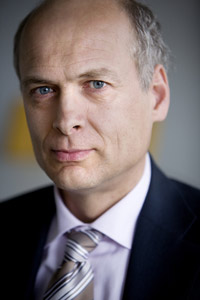I believe that the key issue for TU/e in 2020 arises from the position we wish to have in the Brainport region as a hightech hotspot. We have done several studies comparing the Eindhoven region with Cambridge, Helsinki, München and other innovation hotspots. One of the main conclusions is that Brainport -with all its evident strengths- has one major weakness: the size of the TU/e. All other hightech hotspots thrive on at least one, very large, university that excels in technology and science (in some regions, in fact, multiple universities). Extensive collaboration with industrial and other partners cannot compensate for its small size, simply because other universities (e.g. TU München) also do this - but at a larger scale (given their size).
We therefore need to start assessing the TU/e in all kinds of rankings in terms of both its relative impact (e.g. the citation impact per article) and the sheer volume produced (e.g. the number of articles published) - together making up our ‘brute force’. The same holds for our output in terms of degrees: we have to deliver much more engineers, to keep pace with large universities such as in Delft and Aachen. The relatively small volume of MSc, PDEng and PhD degrees the TU/e delivers on an annual basis, has made it a lot easier for Philips, NXP and other hightech firms to relocate (R&D) activities to other countries in Europe as well as to other continents.
In the last decade, the TU/e strategy for quality and excellence (facilitated by its smaller size) has paid off. We now need to learn to leverage our excellence into bigger numbers - in terms of budget, profes-sors, students, programs and depart-ments. One of the implications is the TU/e has to further internationalize its campus, programs and student population.
In sum, the TU/e needs to grow to at least twice its current size -and preferably larger- to make Brainport more attractive as the place to study and work as a hightech engineer. Such an aggressive growth will require a collective focus sustained over a longer period.
 |
Prof.dr. Sjoerd Romme,
professor Entrepreneurship & Innovation,
dean of IE&IS department |
|



